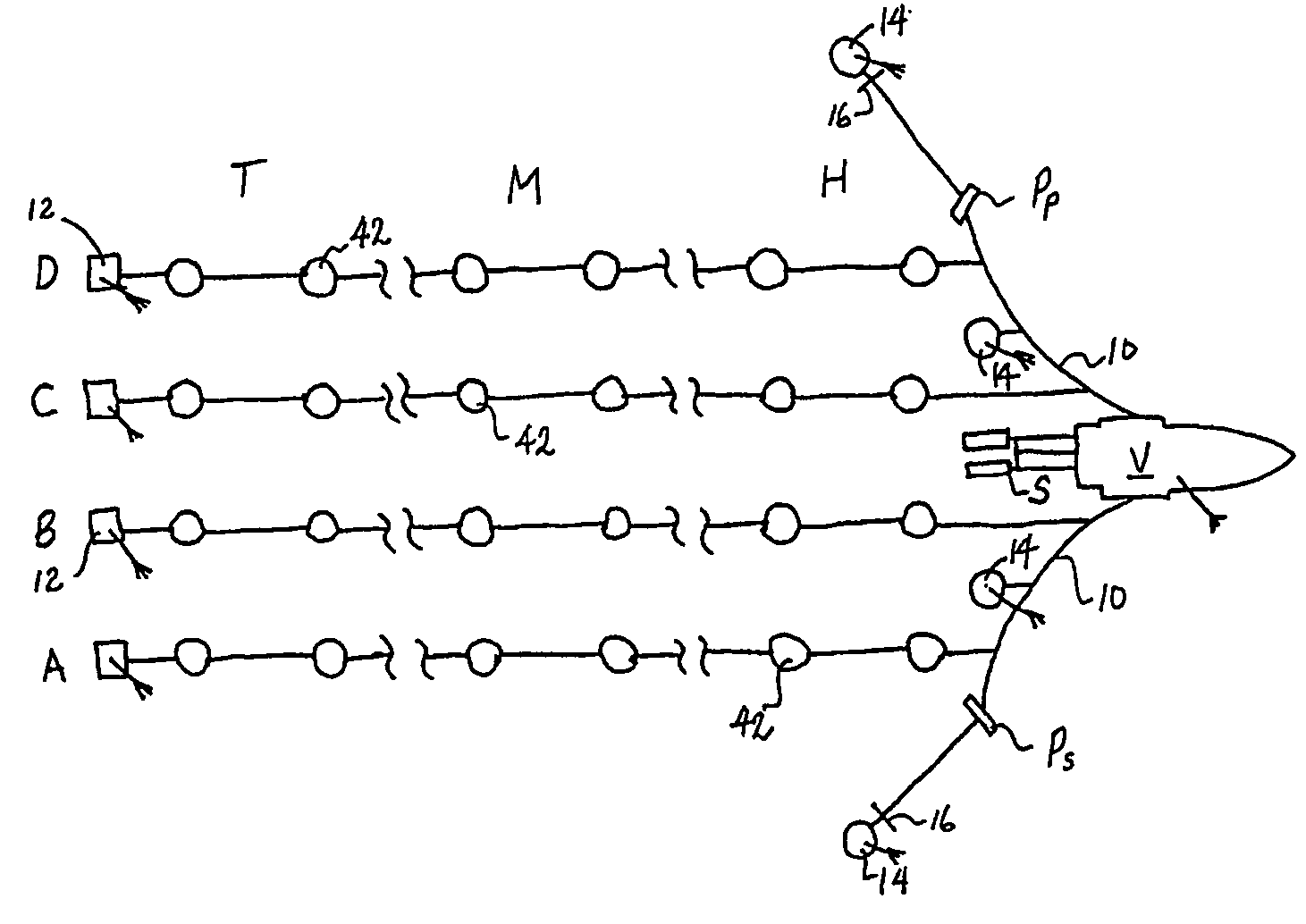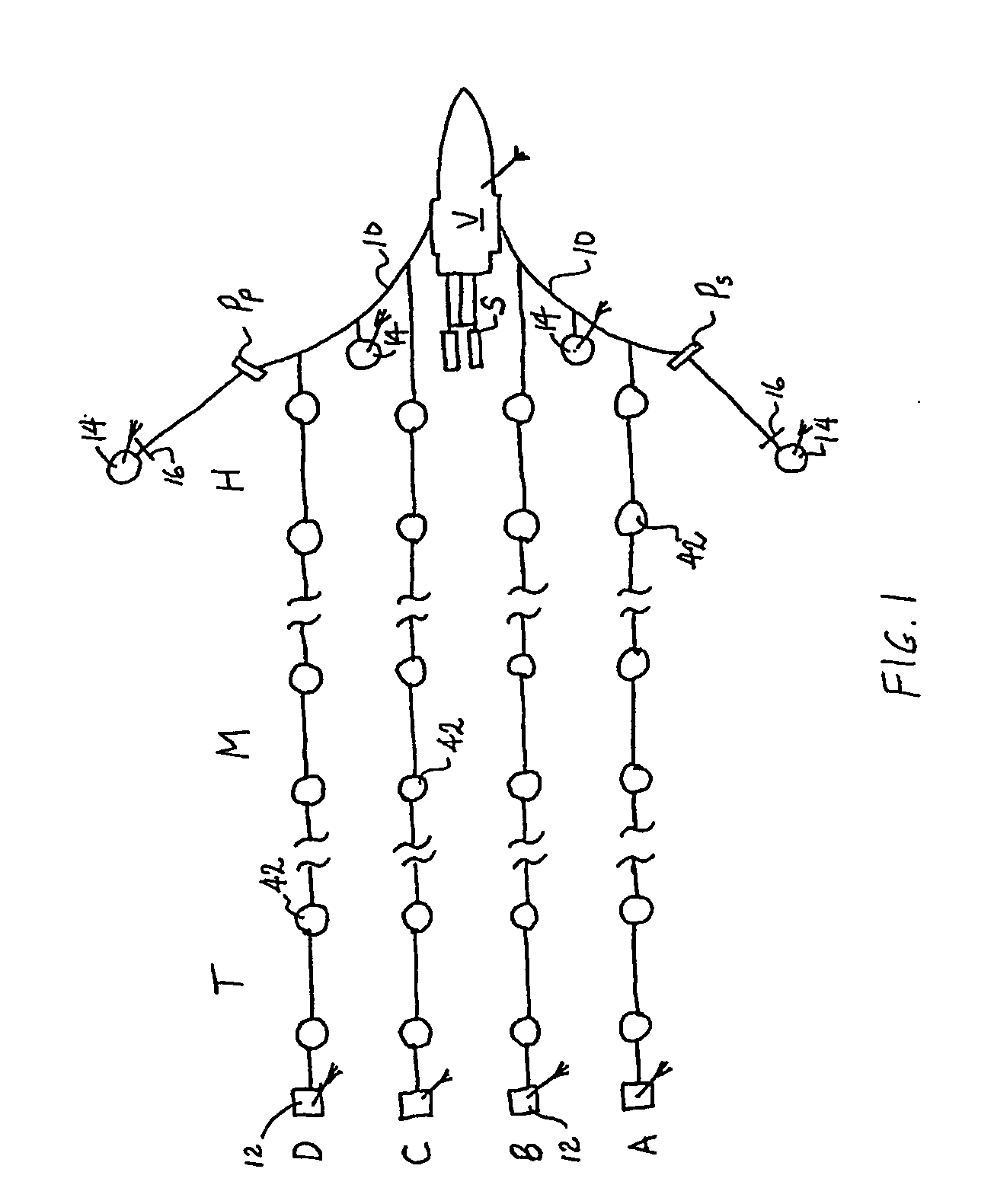Gps-based underwater cable positioning system
a positioning system and underwater cable technology, applied in direction finders using ultrasonic/sonic/infrasonic waves, instruments, etc., can solve the problems of shortening the battery life of battery-powered devices, affecting the positioning geometry of acoustic ranging transceivers, and affecting the accuracy of gps-based cable positioning, etc., to achieve the effect of improving the positioning geometry
- Summary
- Abstract
- Description
- Claims
- Application Information
AI Technical Summary
Benefits of technology
Problems solved by technology
Method used
Image
Examples
Embodiment Construction
[0022] A streamer positioning system embodying features of the invention is depicted in the example of FIGS. 1 and 2. In the example, a marine vessel V is towing a network of hydrophone streamers, represented in FIG. 1 as four streamers A, B, C, and D. Of course, more or fewer streamers could be used. Streamers used in seismic prospecting are typically a few kilometers long. For example, the streamers may be 8 km long with the outermost streamers 700 m apart from each other. Here the streamers are shown broken into a head end section H nearest the vessel, a middle section M, and a tail end section T. In this example, streamer A is the outer starboard streamer; streamer B is the inner starboard streamer; streamer C is the inner port streamer; and streamer D is the outer port streamer. In FIG. 2, only the starboard streamers A, B are depicted at different depths for clarity. Depth control devices (not shown) attached to the streamers about every 150 meters maintain the cables at a con...
PUM
 Login to View More
Login to View More Abstract
Description
Claims
Application Information
 Login to View More
Login to View More - R&D
- Intellectual Property
- Life Sciences
- Materials
- Tech Scout
- Unparalleled Data Quality
- Higher Quality Content
- 60% Fewer Hallucinations
Browse by: Latest US Patents, China's latest patents, Technical Efficacy Thesaurus, Application Domain, Technology Topic, Popular Technical Reports.
© 2025 PatSnap. All rights reserved.Legal|Privacy policy|Modern Slavery Act Transparency Statement|Sitemap|About US| Contact US: help@patsnap.com



